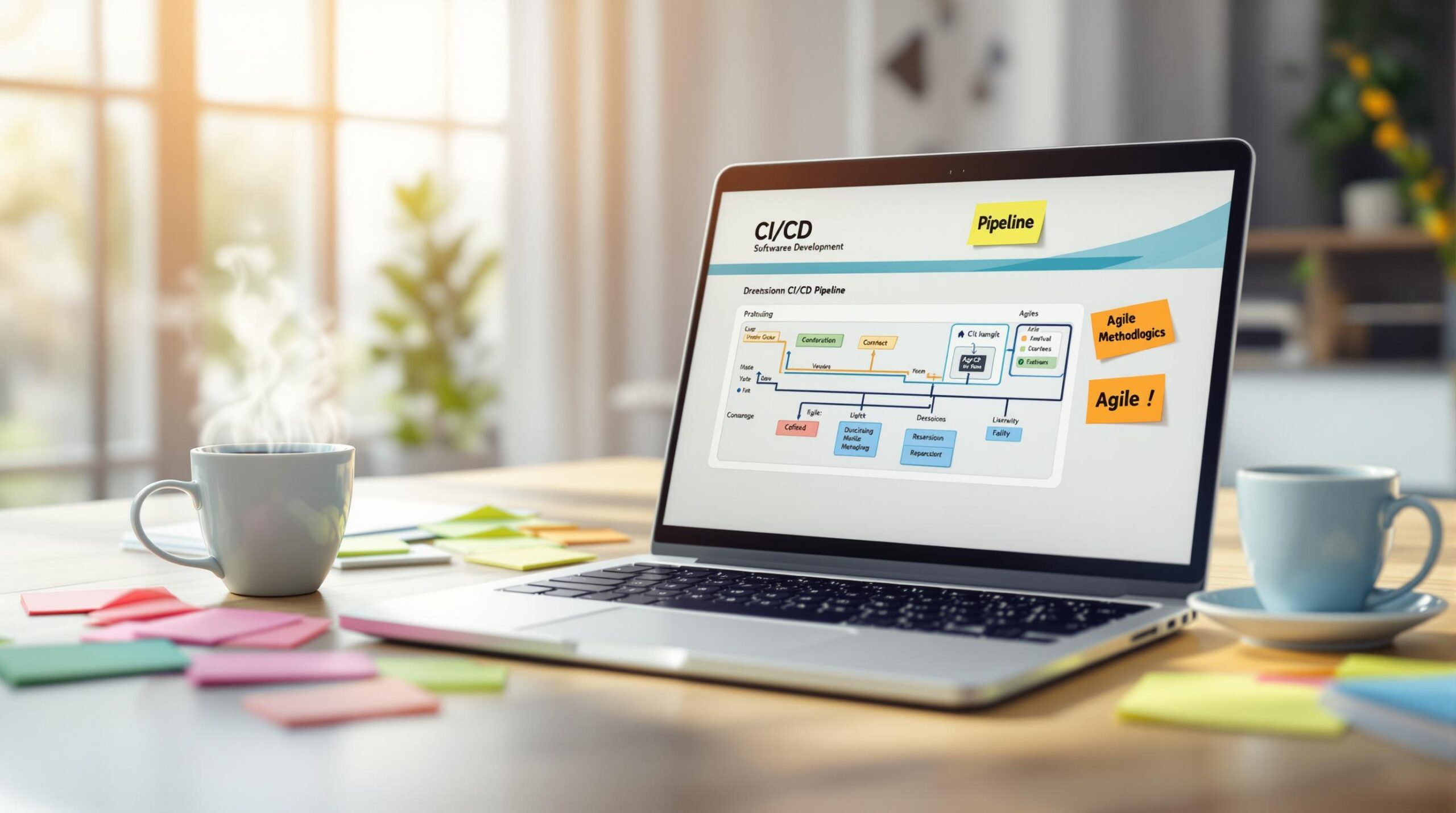Think landing a high-paying IT job from a tier-3 college is impossible? Think again. Students are breaking barriers by focusing on targeted upskilling and practical experience. Here’s how:
- Learn Full-Stack Development: Master MERN/MEAN stacks with project-based training.
- Practice Competitive Coding: Dedicate 6+ months to data structures and algorithms (DSA).
- Build a Portfolio: Showcase at least 12 substantial projects on GitHub.
These strategies helped Rahul, Priya, and Amit overcome outdated curriculums, limited resources, and hiring biases to land roles at Amazon, remote tech companies, and more. The key? Focused learning, hands-on experience, and persistence.
Keep reading to learn how they did it – and how you can too.
Common IT Placement Barriers for Tier-3 Students
Gaps in Industry Training
Tier-3 college students often struggle with technical skills due to outdated facilities and limited exposure to industry-grade tools. Unlike tier-1 institutions that provide access to enterprise software, tier-3 students frequently depend on free resources.
For instance, 78% of MERN stack practice by these students happens on free platforms like freeCodeCamp sandboxes [3][4]. Additionally, there’s a 61% gap between their academic curriculum and industry needs in areas like CI/CD and Agile methodologies [3][5].
Programs like KodNest address these challenges with project-based learning, aligning skills with industry demands. This approach has resulted in placement rates that are three times higher than average for students who complete their training [3][5].
Hiring Preferences and College Bias
Tier-3 students also face limited access to professional tools. They are 83% less likely to have access to resources like AWS or Azure credits and full IDE licenses compared to tier-1 students [3][5].
Another challenge is the bias in hiring processes. Many companies filter candidates based on their college name during initial screenings, making it harder for tier-3 graduates to even get their foot in the door.
Despite these obstacles, success stories show that with the right skills and opportunities, technical ability can overcome institutional bias. The following examples highlight how students have achieved this.
3 Students Who Landed High-Paying IT Jobs
These graduates broke through infrastructure challenges and degree-related biases using focused strategies:
Electrical Engineer Secures ₹9 LPA Role Despite Limited Internet Access
Rahul, an electrical engineering graduate from a tier-3 college in Bihar, faced challenges like a 128kbps BSNL internet connection [1]. Determined to succeed, he dove into the MERN stack through project-based learning, following FreeCodeCamp’s web development curriculum [4].
He built three practical projects, including a real-time chat app and an e-commerce platform. Rahul dedicated 4-6 hours daily to coding and maintained a technical blog that grew to over 10,000 monthly readers [1]. His hands-on approach and consistent effort helped him secure a high-paying role.
While Rahul focused on practical projects, Priya turned to competitive coding to navigate college filters.
CS Graduate Lands ₹18 LPA at Amazon

Priya’s journey to Amazon illustrates how strategic preparation can offset the lack of campus recruitment ties to major tech companies. Her preparation focused on three main areas:
- Daily DSA Practice: Six months of intensive data structures and algorithms practice [1].
- Competitive Programming Success: Ranked in the Top 100 of Codevita [1].
- System Design Mastery: Gained expertise in distributed systems through Hong Kong University’s Coursera specialization [2].
These efforts paid off during Amazon’s technical interviews, where she stood out with her system design knowledge and STAR-method responses, drawing from her hackathon experiences [1].
For non-tech graduates like Amit, a strong portfolio and practical skills opened doors.
Commerce Graduate Becomes $50k Remote Developer
Amit, a commerce graduate, charted a new career path through self-learning and open-source contributions. His approach included:
- Completing Codecademy‘s Full-Stack Pro program [2].
- Building advanced projects like custom HTTP servers and REST APIs [2].
- Engaging in programming subreddits for code reviews.
- Actively contributing to Stack Overflow [1].
Amit showcased his skills through a portfolio featuring Coursera assignment implementations and freelance projects completed during his final year [1][2]. Within 12 months, he secured his first remote role, proving that focused learning and practical experience can rival traditional CS degrees.
Required Skills and Learning Tools
These success stories highlight three key areas that help break through institutional challenges:
Choosing the Right Tech Stack
Building a solid technical foundation starts with making the right choices. The MERN stack (MongoDB, Express.js, React, Node.js) is a favorite for full-stack development roles, as seen in Rahul’s journey. Its popularity addresses the 61% gap in CI/CD and Agile methodologies identified earlier. Alternatively, Python-Django is a strong option, especially for backend-focused projects.
When deciding on your tech stack, keep these points in mind:
- Start with a focus (frontend or backend): Specializing first avoids spreading your skills too thin.
- Increase complexity gradually: Begin with simple CRUD applications and move toward more advanced systems, like distributed architectures.
Communication Skills and Building a Portfolio
Strong communication skills can help you stand out, especially during initial screenings. In fact, candidates with excellent communication see a 40% higher success rate in interviews [1].
Key areas to work on include:
- Active Listening: Aim for high scores (over 85%) in mock interviews through consistent practice [6].
- Technical Documentation: Include detailed samples that explain your implementation decisions [7].
For your portfolio, focus on projects that include production-level architecture documentation. This demonstrates both technical depth and real-world readiness.
Tech Certifications That Add Value
Certifications are most effective when paired with hands-on experience, as shown in the case studies. Choose certifications that align with your tech stack and career goals:
| Certification | Salary Impact |
|---|---|
| AWS Solutions Architect | 15-25% increase |
| React Developer | 12-18% increase |
The goal is to use certifications to enhance your practical skills, not replace them. Successful candidates often complete 2-3 targeted certifications while working on a strong project portfolio.
sbb-itb-f454395
Top Training Programs Compared
Choosing the right training program can make a big difference in building skills quickly, especially for tier-3 students like those we discussed earlier.
Training Platform Cost and Benefits
For tier-3 college students, balancing affordability with strong placement outcomes is key. Here’s a comparison of some leading platforms based on recent data:
| Platform | Program Cost | Duration | Placement Rate | Avg. Starting Salary |
|---|---|---|---|---|
| KodNest | ₹31,999 (Offline) / ₹26,999 (Online) | 6 months | 85% | ₹4.5-6 LPA |
| Scaler | ₹2.99L – 3.5L | 9 months | 89% | ₹7-12 LPA |
| UpGrad | ₹2.45L – 2.85L | 12 months | 82% | ₹6-10 LPA |
These platforms combine structured learning with career support, similar to the strategies used by the students in our earlier case studies.
KodNest Program Details

KodNest offers a program tailored for students like Rahul, who focused on the MERN stack. Here’s what it includes:
Core Technical Training:
- Full Stack Development with an emphasis on Java or Python.
Career Development Features:
- AI-driven mentorship and mock interviews to mimic real hiring scenarios.
- Opportunities to participate in hackathons for hands-on experience.
KodNest uses a blended learning model, mixing live sessions with coding exercises and graded projects. This approach has proven especially helpful for non-CS graduates, such as Amit. The program also offers flexible payment options for both offline and online formats, making it accessible for students with limited resources.
With its practical focus, KodNest not only provides certifications but also supports graduates with job preparation and networking opportunities to kickstart their careers.
Standing Out in Job Applications
Building on Rahul and Priya’s strategies, these application techniques can help tier-3 graduates overcome traditional barriers:
Building a Strong Portfolio
Amazon’s SDE interviewers often look at three specific metrics:
- Commit frequency: At least 3 commits per week
- Issue resolution time: Within 48 hours
- Test coverage percentage: Over 70%
To hit these targets, prioritize quality over quantity. For example, a tier-3 college graduate caught attention by implementing React testing libraries across 8 repositories. This effort played a major role in landing the job.
Coding Competitions and Events
Taking part in coding contests can open doors to job opportunities. One standout case involved a participant in the Cisco Ideathon, who used their CCNA certification and Python automation projects to secure an 18 LPA offer.
Entry-Level Job Strategies
Six-month winter internships are a smart way to increase your chances of landing a full-time role. A CS graduate successfully transitioned from a winter internship at Recooty to a permanent position before finishing college. This aligns with Amit’s strategy of combining remote work with certifications to showcase skills and commitment.
More companies are focusing on proven skills rather than academic backgrounds. Amit’s success in a remote role highlights how contract positions can act as a gateway, with many employers favoring contract-to-hire models to assess abilities over credentials.
Conclusion
These case studies highlight key strategies for breaking through institutional challenges. Graduates have shown that focused skill-building, combined with hands-on projects, leads to strong job placements – even for those from less-recognized colleges.
Take Amit and Priya, for example. Amit’s emphasis on building a portfolio and Priya’s focus on excelling in competitions illustrate how blending technical expertise with real-world experience can reshape career paths. Their journeys prove that targeted training and practical application can unlock career opportunities, regardless of academic background.
Rahul’s deep understanding of the MERN stack and Priya’s dedication to mastering DSA further underscore this point. These examples demonstrate that college reputation doesn’t define success when individuals commit to structured upskilling, build production-ready portfolios, and gain practical experience. With a six-month intensive training plan, even students from tier-3 colleges can secure high-paying roles in top tech companies.
Related Blog Posts
- How KodNest Prepares You for a Successful IT Career
- What are the skills required to land a full stack developer job in Bangalore?
- What are the job prospects after completing a full stack developer course in Bangalore?
- How to Learn New Technologies from a Village: Resources for RuralvEngineering Students





